Home brewing is not all about beer! Let’s take a look at what else you can brew at home, how to do it successfully and storing your home brew.
An Introduction to Homebrewing
When most people think about home brewing, the first thing that comes to mind is brewing beer. And while homebrewing beer is a popular and enjoyable activity, you can also homebrew wine, cider, mead and other types of alcoholic beverages.
On this blog, we discuss the basics of homebrewing and provide an overview of the different types of alcohol that you can make at home. We also discuss and review the equipment you’ll need to get started, as well as provide recipes, and look at the brewing process, so you know exactly how to make (and how long it takes to produce!) a batch of homebrewed booze. So whether you’re a beer lover or a wine aficionado, read on for everything you need to know about home brewing!
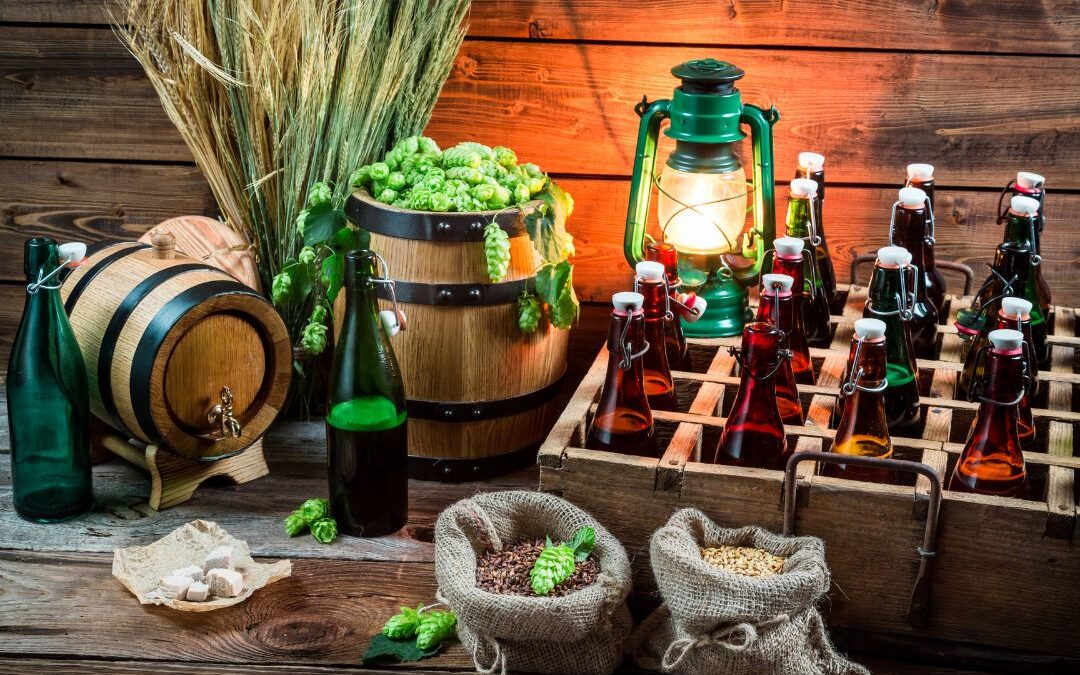
What is home brewing?
Homebrewing is the process of making alcohol at home using fermentation. Fermentation1 is a natural process that occurs when yeast breaks down sugars in food, which produces alcohol and carbon dioxide. Homebrewing can be traced back to ancient times, and today it is a popular hobby for many people around the world.
“When making alcoholic beverages like beer, wine, and mead, the alcohol itself is the desired end product. Here, yeast are encouraged to undergo alcoholic fermentation in vats and barrels by being fed large amounts of sugars. The CO2 is allowed to be released and evaporated, but the ethanol product is retained, creating an alcoholic drink.”
Elizabeth Schap – study.com3
What do you need to start home brewing?
There are a few homebrew supplies you’ll need to get started with homebrewing. First, you’ll need a fermenting vessel, such as a carboy or bucket. You’ll also need some homebrewing equipment, like a brewing kettle, mixer and an airlock.
You will need water (tap water will do, but many people like to filter their water as the mineral content does influence brew chemistry and flavour), as well as your homebrew ingredients:
- Grapes for wine
- Honey for mead
- Juice for cider, and of course
- Hops and Barely or a brew bag/can for beer).
Finally, you’ll need yeast, which you can either find or grow yourself, or purchase from a local homebrew store.
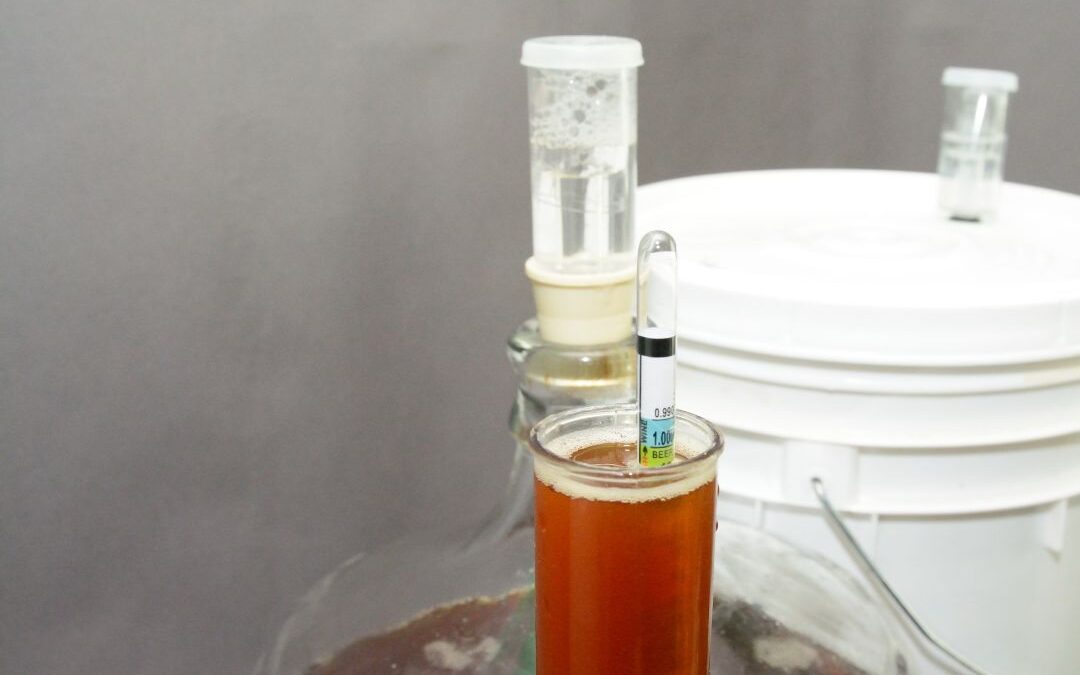
The type of alcohol you homebrew will also dictate the type of equipment you need. For example, if you’re planning on making different beer styles, you’ll need a brewing kit that includes a mash tun and a bottling bucket. If you’re interested in making wine, on the other hand, you’ll need a wine kit that comes with a primary fermenter and a secondary fermenter.
How long does the home brewing process take?
The amount of time it takes to homebrew2 depends on the type of alcohol you’re making. To brew beer, for example, typically takes between two and four weeks to brew, while wine can take anywhere from four weeks to several months. Cider and mead are somewhere in between, taking around two to four weeks each.
The fermentation process is the longest part of homebrewing, as it can take anywhere from a few days to several weeks for the yeast to eat all the sugars and turn them into alcohol. Once fermentation is complete, you’ll need to bottle or keg your homebrew and let it age for at least a few weeks (though it’s worth noting that many homebrews, like hoppy beer, are best enjoyed after only a few weeks of ageing).
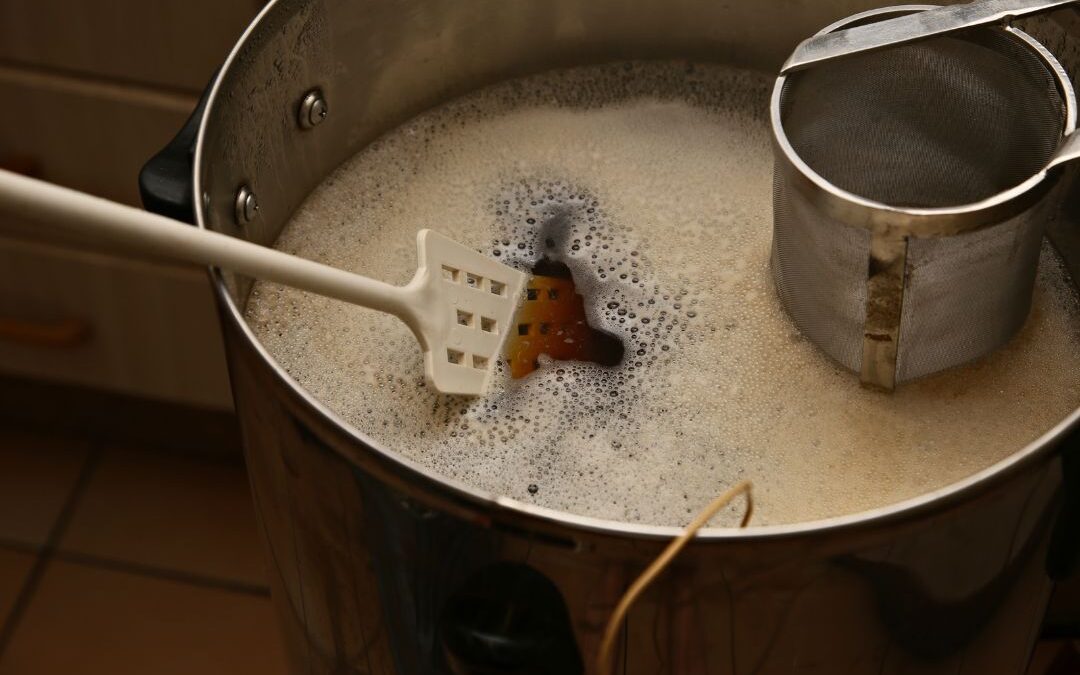
What are the basics of fermentation?
As we mentioned, fermentation is a natural process that occurs when yeast breaks down sugars in food. This process produces alcohol and carbon dioxide.
The key to successful fermentation3 is to create an environment that is conducive to yeast growth, while also preventing the growth of harmful bacteria. This can be accomplished by keeping your fermenting vessel clean and sterilized, as well as using a quality yeast strain.
It’s also important to monitor the temperature of your fermentation, as different types of yeast prefer different temperatures. For example, most ale yeast strains prefer a temperature between 68-72 degrees Fahrenheit, while lager yeast strains prefer a cooler temperature, around 55 degrees Fahrenheit.
Finally, you’ll need to add sugar to your homebrew4 in order to feed the yeast and encourage fermentation. The amount of sugar you’ll need will depend on the type of alcohol you’re making, as well as the specific gravity of your homebrew.
The specific gravity is a measure of the density of your homebrew compared to water. It’s important to monitor the specific gravity during fermentation, as it will give you an indication of how much alcohol has been produced – and basically, how strong your alcoholic beverage will be!
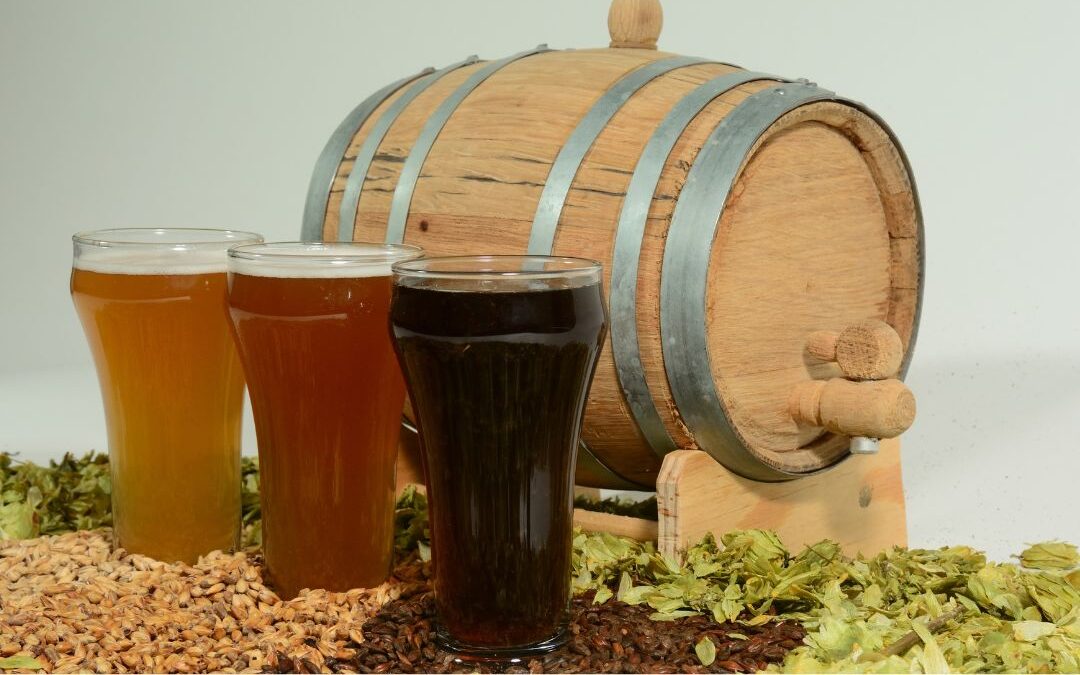
“Over the course of human history, and using a system of trial, error, and careful observation, different cultures began producing fermented beverages.”
Luisa Alba-Lois, Ph.D. & Claudia Segal-Kischinevzky, M.Sc. – nature.com1
How do you store your homebrew5?
Once you’ve bottled or kegged your homebrew, it’s important to store it at the proper temperature, ideally in a cool, dark place. This will help to prevent the growth of harmful bacteria and keep your homebrew tasting its best.
If you’re storing homebrew beer, we recommend keeping it in a fridge or cellar. If you’re storing wine or cider, on the other hand, you can keep it in a cupboard or closet.
Mead is a bit different, as it can be stored like wine or cider, but many people also like to age it for several months (or even years) before drinking. This allows the flavour of the mead to develop and mature over time.

How can you improve the quality of your homebrew?
There are a few simple things you can do to improve the quality of your homebrew. First, make sure you’re using high-quality ingredients – this includes things like malt, hops, yeast, and water.
Second, be sure to follow the beer recipes or other homebrew recipes closely. This may seem like a no-brainer, but it’s important to remember that homebrewing is a science, and even small deviations from the recipe can have a big impact on the final product.
Third, take good care of your homebrewing equipment. This means regularly cleaning and sterilizing all of your brewing gear, as well as storing it properly when you’re not using it.
Finally, be patient! Homebrew takes time and patience to make, so don’t rush the process. Give your homebrew the time it needs to ferment and age properly, and we promise it will be worth the wait.
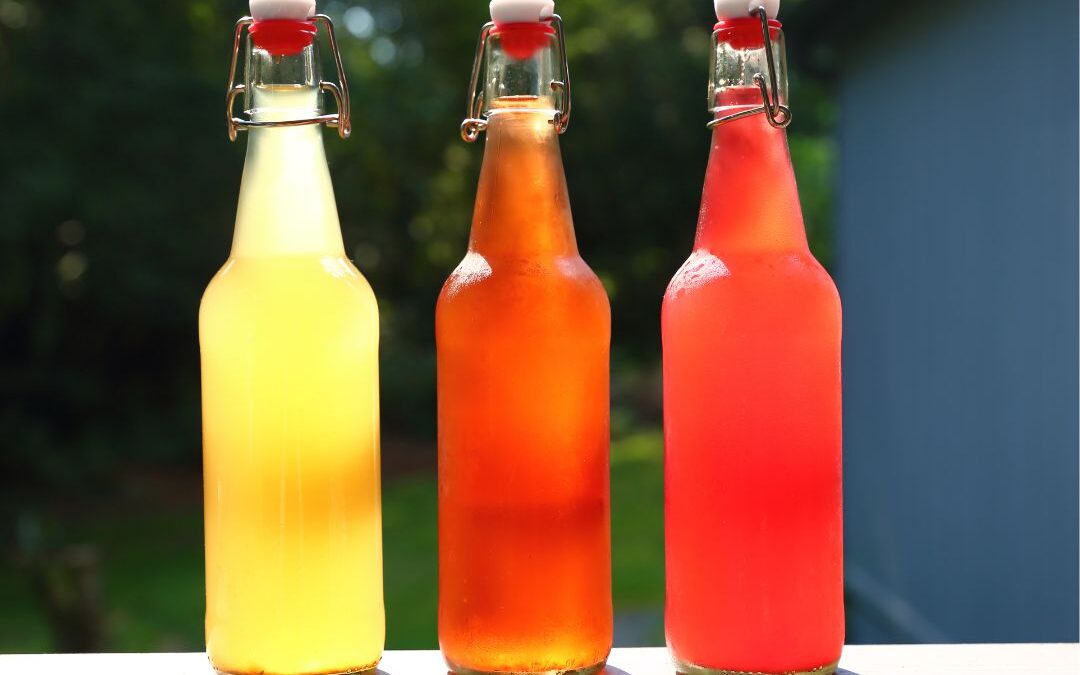
Brewing your own beer or other alcoholic beverages can be very satisfying, and a great conversation starter when offering your brew to family and friends! Just make sure you follow recipes carefully, keep your processes and your equipment hygienic, and most of all, have fun with it!
Cheers!
Now that you know the basics of homebrewing, it’s time to get started!
Have you ever experimented with making beer? How did you go? Let us know in the comments!
What are the different types of beer?
There are many different types of beer, and now with the microbrewery and craft beer boom, brewers are coming up with more and more ways to stretch the boundaries and introduce new ways to challenge and delight our taste buds. One thing that will never change though, are different types of beer that will remain mainstream. The most mainstream types of beer are:
Lager beers – The most popular type of beer in the world. All of the major players in the world have lager as their premier offering. Stella Artois, Heineken and Budweiser are just three extremely popular lagers. Lagers have a slower fermentation process and often at cooler temperatures. You simply can’t beat a cold lager on a hot summer’s day!
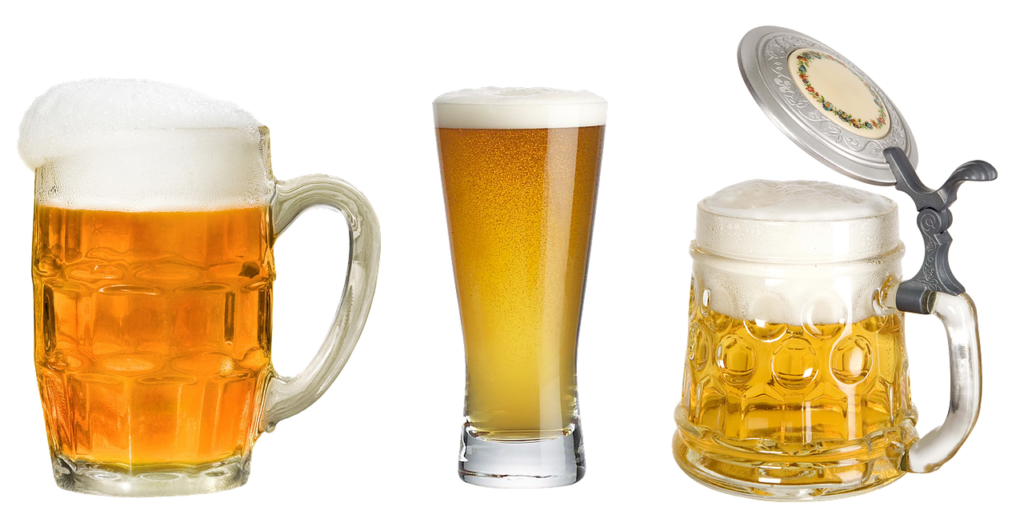
Stout beers – Stouts are roasted and dark ales known for coffee and chocolate notes. They often come with a very thick and creamy head. There are different types of stout such as dry stout and milk stout. Vine Pair have written a full stout 101 guide here to explain all things stout.
Ale – Ale is super versatile and comes in many types. You may have heard of pale ales, brown ales, sour ales, amber ale, XPAs, etc. There are also specific pale ales such as India pale ale, English pale ale and American pale ale. Newcastle Brown Ale is a particularly popular offering in the USA. The opposite to lager, fermentation is short and done at warmer temperatures, making home brew ales particularly popular amongst hobbyists!
Porter – Porter is a dark type of beer/ ale that can often have quite a fruity flavor or even dry in its flavour. Porter was discovered in London and popular Porters include English Brown Porter and Baltic Porter.
Blonde Ale – Blonde Ales are a light and easy to drink type of beer, especially after a long day in the sun if you’re needing to quench your thirst. Blonde ales are light and clear in appearance, a lot like lager, and have quite a mellow taste rather than bitter flavors.
“Fermentation may have been a greater discovery than fire”
David Rains Wallace
What types of beer are dark?
There are different types of beer that are dark but the most usual dark beer is a nice stout. One of the most famous dark beers in the world is of course Guinness, which is an Irish dry stout. Porter is a different type of beer that is dark. Both stouts and porters are usually full-bodied drinks that are rich in flavor. Chocolate and coffee are often two tasting notes that come through strongly in darker beers. This article by Dan Murphy’s takes a really deep dive into the different beer styles that fall into the dark category.
What is the healthiest beer?
Now, unfortunately, I can’t be the bearer of exceptional news here and say that all beer types are healthy. The fact is, they aren’t. However, in moderation, beer can actually have some surprising health benefits. This article by NBC states seven reasons why beer could actually be healthy for you, working off the premise that you have one pint a day. What makes this better? The fact that these claims are backed by science! Some of these claims made are that drinking beer in moderation can actually lower your risk of heart disease and build stronger bones. Now, it is worth noting before you treat this as gospel, that this article is not medical advice!
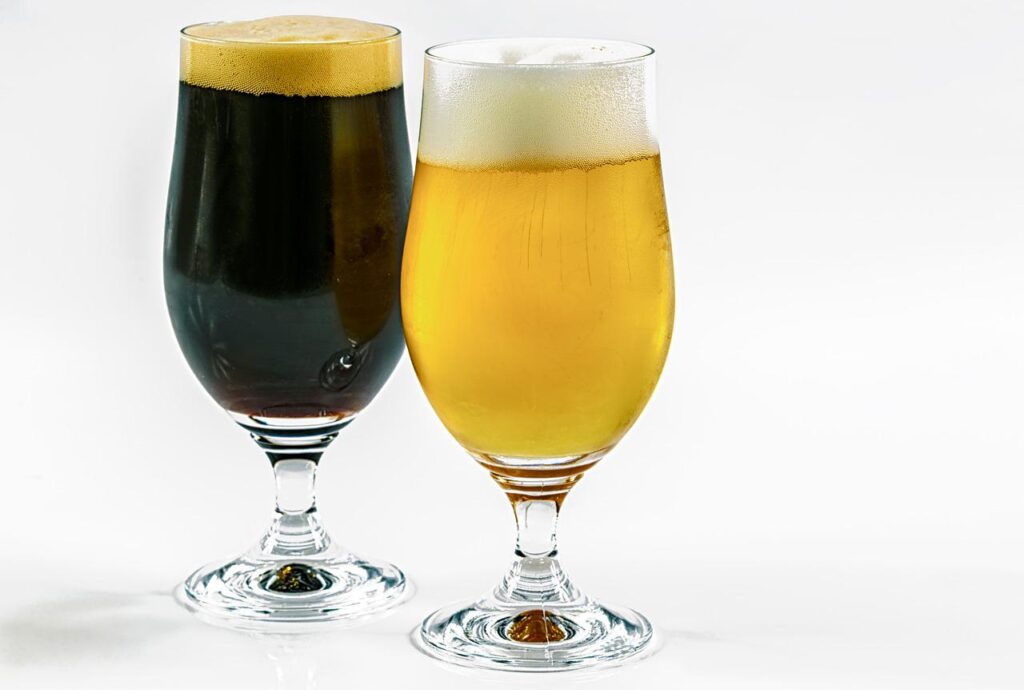
In truth though, there’s no way of substantiating if one beer is the healthiest of them all. Most medical professionals and nutritionists however would say that 0% alternatives are the healthiest of them all. Heineken 0 is a very popular offering that is beginning to sprout up in bars more and more often. A healthy alcoholic version, however, is Guinness. Known as ‘liquid bread’ by many, Guinness is actually high in iron and other nutrients, as well as high in fibre. Not to mention, absolutely delicious!
What types of beer are gluten-free?
In this WebMD article it is stated that beer typically has a gluten content of 20 ppm (parts per million). This would make wheat beers problematic for those with an intolerance to gluten. Fear not if you are on a gluten-free diet, however. There is a website for you (of course). Best Gluten Free Beers is a website that showcases an enormous range of gluten-free or gluten-reduced beers from around the world. The different types of beer that are gluten-free are anything from a dark stout to your normal lager. So, if you are gluten intolerant, there are still a lot of gluten-free options out there for you! The beer gods have your back!
What is the most popular type of beer?
Lager is undoubtedly the most popular type of beer in the world. It is most prevalent in mainstream bars, bottle shops, etc. Whether it’s a nice Corona with a slice of lemon, or a Heineken, lager is synonymous with ‘having a beer’ the world over. This graph by Statista breaks down the most popular lagers in the world, ranked by brand value.
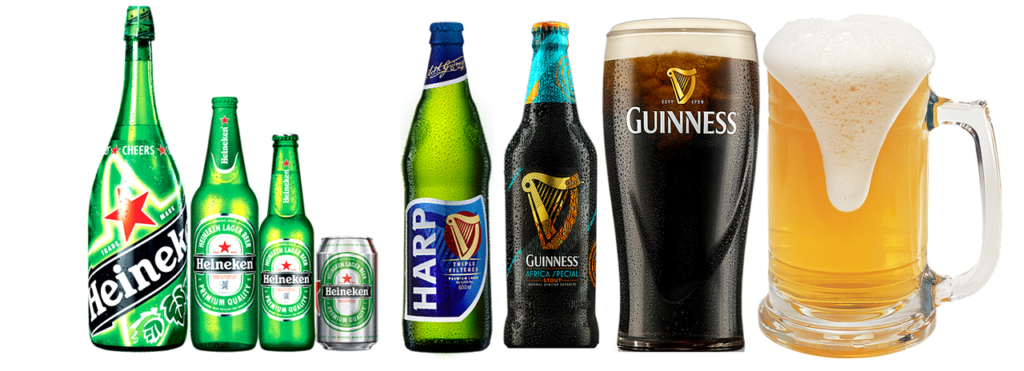
“Beer, if drank with moderation, softens the temper, cheers the spirit and promotes health”
Thomas Jefferson
What are the different types of cider?
Choosing the right cider can be tough with all of the different types available. But don’t worry, we’re here to help! The different types of ciders usually depend on apples, their aging method, and added flavors like spices or fruits.
There are two main types of cider styles:
● Standard Cider Style.
● Specialty Cider Style.
“Cider is the fermented juice of apples and may include some pear juice. Perry is the fermented juice of pears and may include some apple juice. Perry is also known as pear cider.”
cideraustralia.org.au

Standard Cider Style
The standard style ciders are made from fermented apple juice, with sugar added only in limited amounts to help achieve the desired sweetness or alcohol level. Some examples of standard cider types are fruit ciders, spiced ciders, sour ciders, hopped ciders, wood-aged ciders, and ice ciders.
Standard cider styles are further categorized into two types:
● Modern Ciders.
● Heritage Ciders.
Modern Cider
Modern ciders are typically made from a blend of apples to produce a refreshing drink that is lower in tannin and higher in acidity. Its aroma and flavor may be sweet or low-alcohol having moderate acidity that is combined to give a refreshing character. This cider is usually pale to gold color with a medium body. Overall, it is a refreshing drink that is not watery or bald.
Some common types include Winesap, Golden Delicious, Jonathan, Macintosh, and Braeburn. Other types of apples used include russets, crabapples, northern spy, and Baldwin. Most of these apples are used for their sweetness, but some are also used for their tartness.
Heritage Cider
Heritage ciders are made from a mixture of different types of apples, including bittersweet apples, crab apples, and wild apples. These ciders will typically be high in tannin and lower in sweetness than modern ciders. Generally, they have lower MLF flavor notes. The flavor and aroma of heritage cider can be sweet or low-alcohol but is always complex. The appearance is clear to brilliant, and the color can range from yellow to gold. The cider will have a medium body with some tannin present. Popular varieties include Dabinett, Kingston Black, Roxbury Russet, and Wickson. Overall, heritage cider is a refreshing drink that can be enjoyed with a variety of meals.
Specialty Cider Style
The specialty cider style is a catch-all category for any cider that does not fit into the standard style. This includes ciders made with unusual apple varieties, ciders made with added flavors, and ciders that are aged in barrels.
Some common types of specialty cider include:
Fruit Cider
Fruit cider is made with, you guessed it, fruit! In addition to apples, many cideries use fruits like pears (to make pear cider), berries, quince, and even pumpkins to make their cider unique. As with all ciders, the apple character should be present, but it shouldn’t be too overwhelming. The cider is normally clear and bright, with a color that fits the added fruits. And finally, it has a medium to full body, depending on the fruits used.
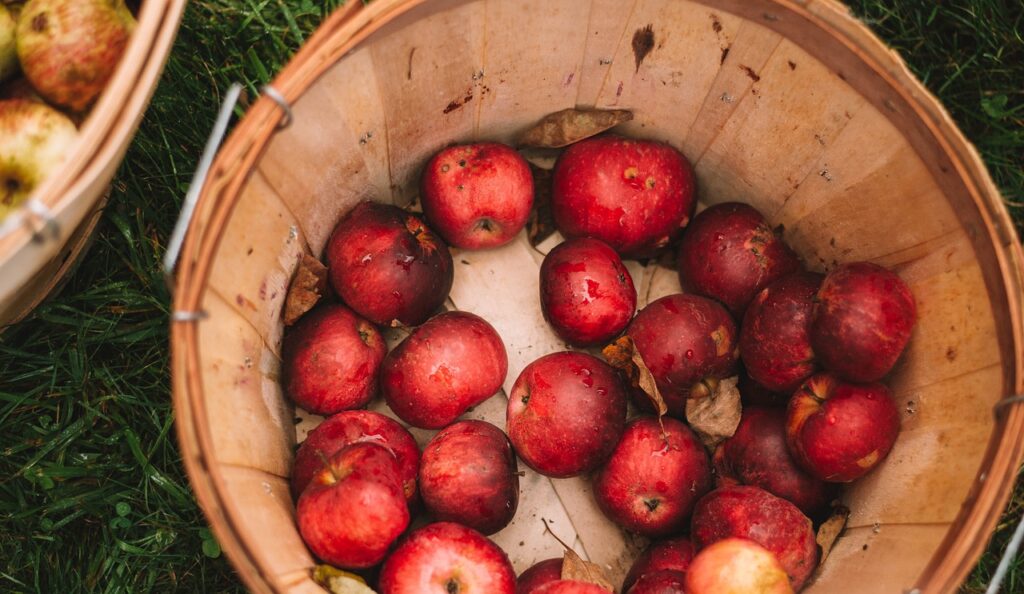
Hopped Cider
This type of cider is made by adding hops to the brew. The result is a slightly bitter, more refreshing drink that is perfect for summer days. The apple character should be present, but not too dominant. The appearance should be clear to brilliant, and the cider should have average or more carbonation. Moreover, the mouthfeel should be pleasant and not too tannic from the hops. Overall, this type of cider is a well-balanced and complex drink that is perfect for sipping on a hot day.
Spiced Cider
Spiced cider is a cider that has spices added to it, such as cinnamon, nutmeg, allspice, or ginger. The cider character should be present and fit with the spices. The cider may be tannic from the effect of the spices but should not be bitter from over-extraction. The overall impression should be like a white wine with complex flavors. The apple character should marry with the spices and give a balanced result.
Wood Aged Cider
Wood-aged cider is a type of cider that has been aged in wooden barrels. This type of cider can have a complex flavor profile, depending on the type of wood used and how long the cider has been aged. Wood-aged cider may also have a significant tannic or astringent mouthfeel, depending on the barrel used. Moreover, the color of wood-aged cider may be affected by the type of wood used in the barrel. In general, however, wood-aged cider should be clear to brilliant in appearance. Finally, wood-aged cider typically has an alcohol content of 5-12%.
Sour Cider
Sour cider is a type of cider that has a tart, acidic flavor. The manufacturing process of sour cider involves the use of non-standard yeast or bacteria during fermentation. This results in a final product that has higher acidity than regular cider. Sour cider may also have other fruit or botanical flavors added to it, creating a complex and refreshing drink.
Iced Cider
Iced cider is a cider that is served chilled or over ice. It is a type of sweetened cider and is made by freezing cider and then thawing it out. This process removes water from the cider, leaving behind a more concentrated and sweetened beverage. Iced cider typically has a higher sugar content and alcohol by volume (ABV) than regular cider. The flavor and aroma of iced cider are intense, with some fruit and tropical fruit flavors being most prominent. Iced cider is also typically low in acidity. In terms of appearance, iced cider is clear with a deep color that ranges from gold to dark amber.
What are the 6 main types of wine?
Think you know all there is to know about wine? Guess again! There are six main types of wine, each with a unique flavor profile.
How a wine tastes depends on various factors, including how long it’s aged and in what type of vessel. Climate, grape variety, acidity, sweetness, and juice-to-skin contact time are also important considerations.

The 6 main types of wine we are covering here are:
- Red wines
- White wines
- Rose
- Sparking wines
- Dessert wines
- Fortified wines
Red Wines
Red wines are some of the most diverse and flavorful drinks around! There are so many different types of red wine, each with unique flavors and characteristics.
Whether you prefer light and fruity rosés, or rich and full-bodied cabernets, there’s a red wine for everyone.

Here are some of the most famous red wines that we recommend trying:
● Cabernet Sauvignon
● Pinot Noir
● Merlot
● Zinfandel
● Syrah/Shiraz
Red wine and steak have always been a classic pairing, but not all red wines are created equal.
White Wines
White wines are known for their refreshing, fruity flavors. While there are many different types of white wine, they all share a few common characteristics.
For example, white wines are usually lighter in color and body than red wines and have lower tannin levels, making them more versatile regarding food pairings.
They are made from white and black grapes, but red wines are fermented with grape skins. The skins are removed, leaving only the clear grape juice, resulting in a light, refreshing beverage.

Some of the most famous white wines that wine lovers can try are:
● Chardonnay
● Moscato
● Sauvignon Blanc
● Pinot Grigio
White wines are best paired with lighter foods like fish, poultry, and salads. But don’t be afraid to experiment!
Rosé Wines
Rosé Wines get their color from red wine grapes and fermenting with grape skins for a reduced amount of time. This gives Rosé Wines their pink hue and lighter flavor, unlike red wine’s fuller-bodied taste.
Rosé wines typically come from a blend of various wine grapes. Rosé, however, can also just be made from one type of grape.

Some of the most common Rose Wines are:
● Provence Rosé
● Grenache Rosé
● Sangiovese Rosé
● Zinfandel Rosé
The fruity flavors make rosé especially good for drinking with spicy dishes.
Sparkling Wines
Most of us have tasted sparkling wine — at the very least around the holidays or when celebrating a special occasion, right?
Sparkling wines have been carbonated and usually small amounts of sugar are added. Carbonation decreases the body in wine, so sparkling wines are typically light and refreshing.
The taste of sparkling wine is impacted by the location where it was produced, which grape(s) were used, and climate conditions during the growing process.

Some of the most famous Sparkling wines across the globe are:
● Champagne
● Prosecco
● Cava
● Crémant
● Sekt
The delicate taste of sparkling wine is best balanced with other light, less rich flavors.
Dessert Wines
Dessert wines are a broad category of sweet wines typically served after a meal. These drinks often contain more sugar and alcohol than other types of wine and can include fortified wine, sweet wine, and sparkling varieties.
Port, Madeira, Sherry, and late-harvest wines are examples of dessert wines with more than 15% alcohol by volume1 (ABV).
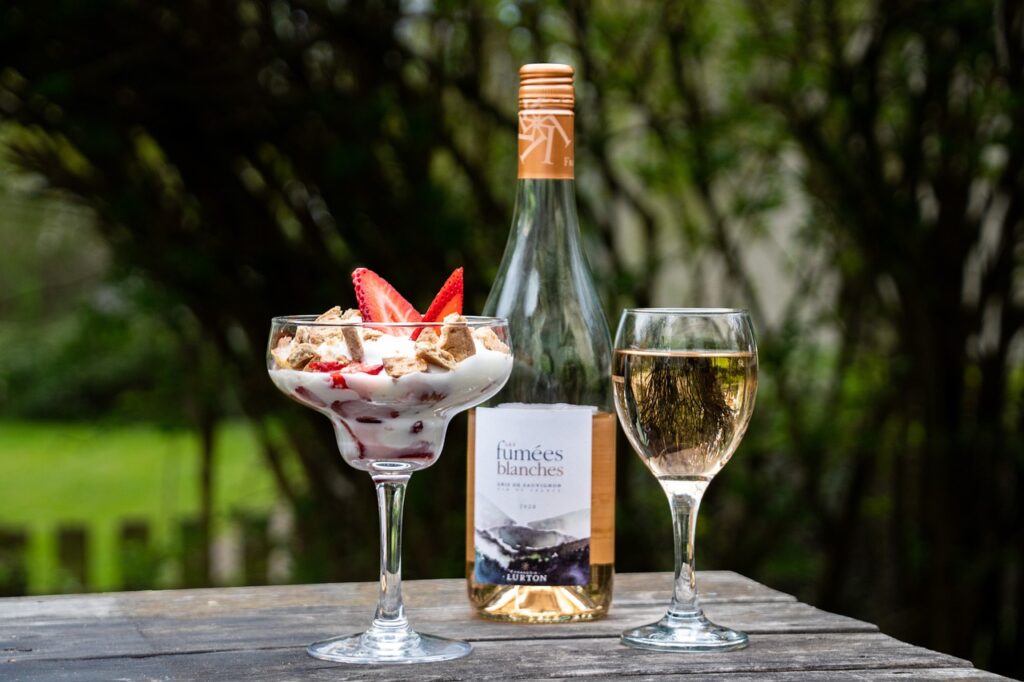
Here are some other dessert wines people love:
● Sparkling Dessert Wine
● Lightly Sweet Dessert Wine
● Richly Sweet Dessert Wine
● Sweet Red Wine
● Fortified Wine
They go well with sweets and cheese, but many prefer to sip them alone.
Fortified Wines
A bottle of fortified wine is a delicious, thick wine-based sipping treat commonly served before or after dinner. Madeira, Marsala, port, sherry, and vermouth are the most common fortified wines.2
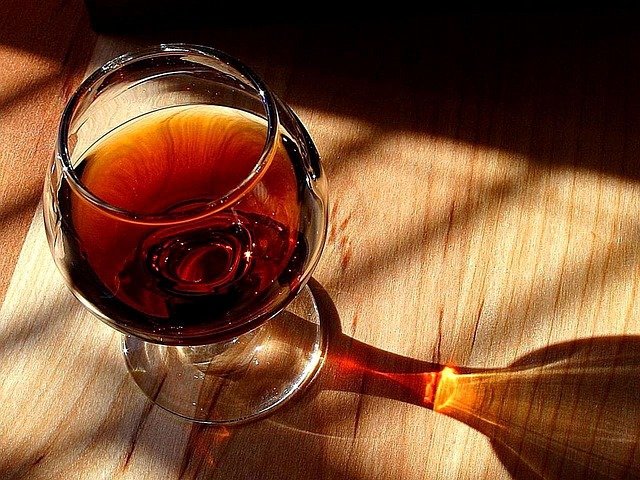
The fundamental procedure for producing fortified wine involves fermenting a base wine and combining it with distilled spirits.
The most famous fortified wines include, from sweetest to driest:
● Sherry
● Port wine
● Vermouth
● Marsala
In general, these wines work as both an aperitif and dessert wine.
“The most grown grape variety for wine is Cabernet Sauvignon.”
Per and Britt karlsson – forbes.com3
How many types of wine grapes4 are there?
Over 10,000 wine grapes are cultivated worldwide; New varieties have often been developed by grafting or other methods to produce hybrids. It’s standard for particular grapes to be only prevalent in specific countries. Wines made from these local grapes are considered characteristic of the country or region where they come from.
Some of the famous wine grapes are:
- Cabernet Sauvignon
- Barbera
- Burgundy
- Grenache
- Petite Sirah
- Riesling
- Chardonnay
- Pinot Grigio / Gris
- Bordeaux
